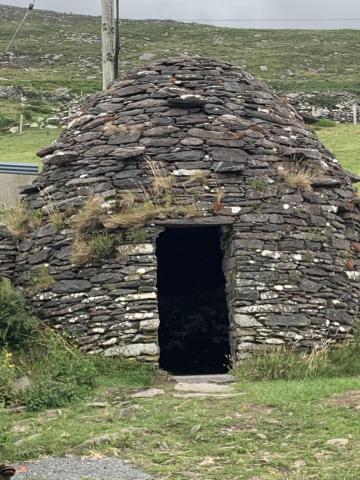Cheryl Hughes: Two Stories from Ireland
Throw-Away Girls Recently, I read SMALL THINGS LIKE THESE, an historical novel based on Ireland’s Magdalen laundries, by Claire Keegan. Until I read this book, I had always seen the Irish people as being constantly victimized by outsiders like the British. It seems, however, that every country has an event in its past that is cause for national shame. The Magdalen laundries and the treatment of the girls housed there is Ireland’s event.These laundries represented more than just a place where people sent clothes to be cleaned. They were manned mostly by young girls who had become pregnant out of wedlock. The Magdalen laundries were run by the Catholic Church with additional funding from the Irish State. When a young girl found herself in a state of desperation with no place to turn, she was sent to one of the laundries.
Many of the girls housed there, lost their babies or died themselves. The babies who didn’t die were often adopted out from the Mother and Baby Homes, a subsidiary program of the laundries. The laundries were basically workhouses with no hope of escape. The girls were forced to do the labor with no pay or recognition, and they were guarded closely and disciplined mercilessly.
In the book, SMALL THINGS LIKE THESE, the main character, Furlong, the father of young girls, wrestles with the injustices heaped upon the laundry girls. Those around him imply that it is none of their or his concern, but he can’t let it go. After delivering coal to one of the laundries, he finds a young girl who has been locked in the coal cellar during a brutal winter. The nuns have taken her baby and locked the girl inside as punishment for whatever crime they imagine she has committed. Furlong rescues the girl, even though he knows he will have hell to pay when his wife and friends find out. The book shines a light on one person who did the right thing, as if to ask, what if we all did the right thing? The Magdalen laundries were in operation from 1922 to 1996. In 2021, the Mother and Baby Home Commission Report documented the death of nine thousand children in eighteen of those institutions. A total of 2,124 women were referred by the state to the laundries. The youngest was just nine years old. In 2013, Prime Minister Enda Kenny issued an apology from the Irish government for its
part in the laundries (information posted in the afterward of SMALL THINGS LIKE THESE, by Claire
Keegan).
The Original Tiny Houses
There were often times when we were driving through Ireland last summer, that something unique would appear on the landscape.. Sometimes, the unexpected thing was so unique, it warranted a “Pull over!” I saw the sign, PREHISTORIC BEEHIVE HUTS, 2000 BC, 2 MINUTE WALK, and an arrow pointing the way before I saw the actual structures. Our son-in-law Thomas was driving. We had been on the Dingle Peninsula for most of the day, and we were heading to our B&B for much-needed rest.
There are some things in life that are worth the extra effort. These little architectural wonders are one of those things.
According to atlasobscura.com, the exact age of these structures is unknown, because they don’t belong to any one time frame. They have housed pagans and hermits and followers of Christ. At some point, there were more than 400 of these huts. The builders didn’t use mortar. They stacked rings of stone, one on top of the other. Each layer was positioned a little further inward until it fit snugly, and a pointed roof was formed in the center. The oldest of these huts date back to the Neolithic period.

I don’t know if you’ve ever stood on a spot where you can feel the invisible layers of history riseup around you, but it is awe-inspiring. It has happened to me twice, once at Gettysburg and again when I stood inside a beehive hut in Ireland. It was raining on the day we visited the area, but inside the huts, everything was dry.
Thomas has often tried to get Nikki to sell what they have and buy one of those tiny houses you see on HGTV or for sale on the internet. Nikki is not a fan. As Thomas walked around inside the hut, he turned to Nikki and said, “It’s safe, it’s dry, it’s warm. This is all you need.” Nikki just rolled her eyes, and walked outside to see the wall that enclosed the community of huts.
It really doesn’t matter to me how old the huts are. I’m just amazed at the corbelling method the Irish stonemasons have used for thousands of years. We probably have rocks on this farm that could be fitted together for a beehive hut. We could build a little guest house for Thomas when he comes to visit.



























